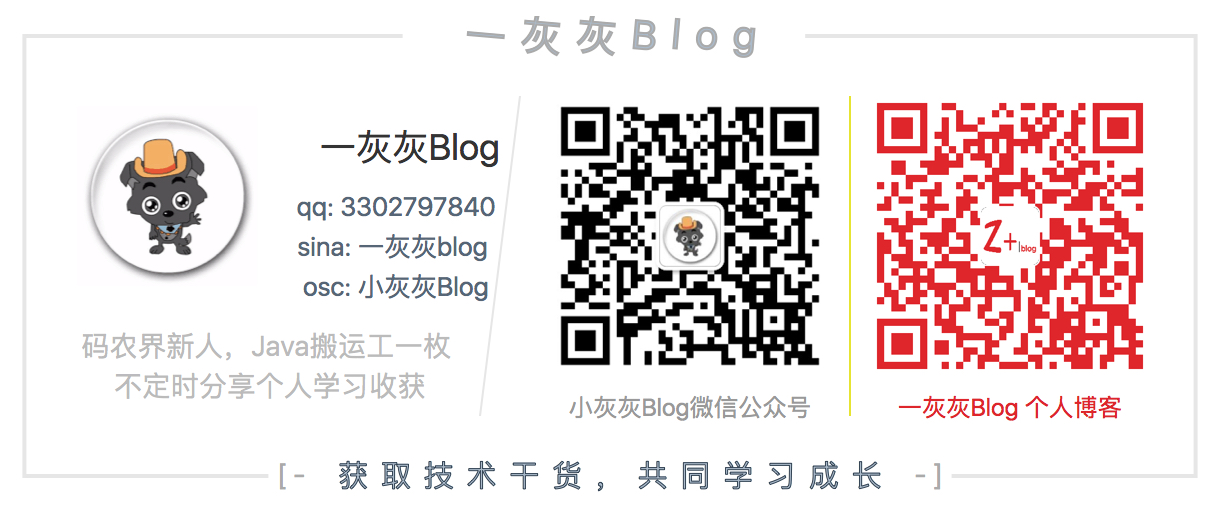RabbitMQ基础教程之基本使用篇 最近因为工作原因使用到RabbitMQ,之前也接触过其他的mq消息中间件,从实际使用感觉来看,却不太一样,正好趁着周末,可以好好看一下RabbitMQ的相关知识点;希望可以通过一些学习,可以搞清楚以下几点
基础环境搭建
可以怎么使用
实现原理是怎样的
实际工程中的使用(比如结合SpringBoot可以怎么玩)
相关博文,欢迎查看:
I. 前提准备 在开始之前,先得搭建基本的环境,因为个人主要是mac进行的开发,所有写了一篇mac上如何安装rabbitmq的教程,可以通过 《mac下安装和测试rabbitmq》 查看
1. Centos安装过程 下面简单说一下Linux系统下,可以如何安装
Centos 系统:
1 2 3 4 5 6 7 rpm -Uvh http://download.fedoraproject.org/pub/epel/7/x86_64/e/epel-release-7-8.noarch.rpm yum install erlang wget http://www.rabbitmq.com/releases/rabbitmq-server/v3.6.6/rabbitmq-server-3.6.6-1.el7.noarch.rpm yum install rabbitmq-server-3.6.6-1.el7.noarch.rpm
启动和查看的命令
1 2 3 4 service rabbitmq-server start service rabbitmq-server status
2. 注意
安装完毕之后,可以开启控制台,主要就是 rabbitmq-plugins enable rabbitmq_management, 默认的端口号为15672
默认分配的用户/密码为: guest/guest, 只允许本地访问;如果跨应用读写数据时,请添加账号和设置对应的权限(推荐参考上面mac安装的博文,里面有介绍)
II. 基本使用篇 直接使用amqp-client客户端做基本的数据读写,先不考虑Spring容器的场景,我们可以怎样进行塞数据,然后又怎样可以从里面获取数据;
在实际使用之前,有必要了解一下RabbitMQ的几个基本概念,即什么是Queue,Exchange,Binding,关于这些基本概念,可以参考博文:
1. 基本使用姿势 首先是建立连接,一般需要设置服务器的IP,端口号,用户名密码之类的,公共代码如下
1 2 3 4 5 6 7 8 9 10 11 12 13 public class RabbitUtil public static ConnectionFactory getConnectionFactory () ConnectionFactory factory = new ConnectionFactory(); factory.setHost("127.0.0.1" ); factory.setPort(5672 ); factory.setUsername("admin" ); factory.setPassword("admin" ); factory.setVirtualHost("/" ); return factory; } }
a. 生产者 要使用,基本的就需要一个消息投递和一个消息消费两方,线看消息生产者的一般写法
1 2 3 4 5 6 7 8 9 10 11 12 13 14 15 16 17 18 19 20 21 public class MsgProducer public static void publishMsg (String exchange, BuiltinExchangeType exchangeType, String toutingKey, String message) throws IOException, TimeoutException { ConnectionFactory factory = RabbitUtil.getConnectionFactory(); Connection connection = factory.newConnection(); Channel channel = connection.createChannel(); channel.exchangeDeclare(exchange, exchangeType, true , false , null ); channel.basicPublish(exchange, toutingKey, null , message.getBytes()); channel.close(); connection.close(); } }
针对上面的代码,结合RabbitMQ的基本概念进行分析
不管是干啥,第一步都是获取连接,也就是上面的Connection
从《RabbitMq基础教程之基本概念》 直到,生产者消费者都是借助Channel与Exchange或者Queue打交道,接下来就是通过Connection创建数据流通信道Channel
Channel准备完毕之后,生产者就可以向其中投递数据
投递完毕之后,回收现场资源
疑问:
在声明Exchange时,是否就需要选择消息绑定策略?
不声明时,默认是什么策略?
b. 消费者 结合上面的代码和分析,大胆的预测下消费者的流程
获取连接Connection
创建Channel
将Channel与Queue进行绑定
创建一个Consumer,从Queue中获取数据
消息消费之后,ack
下面给出一个mq推数据的消费过程
1 2 3 4 5 6 7 8 9 10 11 12 13 14 15 16 17 18 19 20 21 22 23 24 25 26 27 28 29 30 31 32 33 34 35 36 public class MsgConsumer public static void consumerMsg (String exchange, String queue, String routingKey) throws IOException, TimeoutException { ConnectionFactory factory = RabbitUtil.getConnectionFactory(); Connection connection = factory.newConnection(); final Channel channel = connection.createChannel(); channel.queueDeclare(queue, true , false , false , null ); channel.queueBind(queue, exchange, routingKey); System.out.println("[*] Waiting for message. To exist press CTRL+C" ); Consumer consumer = new DefaultConsumer(channel) { @Override public void handleDelivery (String consumerTag, Envelope envelope, AMQP.BasicProperties properties, byte [] body) throws IOException String message = new String(body, "UTF-8" ); try { System.out.println(" [x] Received '" + message); } finally { System.out.println(" [x] Done" ); channel.basicAck(envelope.getDeliveryTag(), false ); } } }; channel.basicConsume(queue, false , consumer); } }
2. Direct方式 a. Producer 直接在前面的基础上进行测试,我们定义一个新的exchange名为direct.exchange,并且制定ExchangeType为直接路由方式 (先不管这种写法的合理性)
1 2 3 4 5 6 7 8 9 10 11 12 13 14 15 16 17 18 19 20 21 22 23 24 public class DirectProducer private static final String EXCHANGE_NAME = "direct.exchange" ; public void publishMsg (String routingKey, String msg) try { MsgProducer.publishMsg(EXCHANGE_NAME, BuiltinExchangeType.DIRECT, routingKey, msg); } catch (Exception e) { e.printStackTrace(); } } public static void main (String[] args) DirectProducer directProducer = new DirectProducer(); String[] routingKey = new String[]{"aaa" , "bbb" }; String msg = "hello >>> " ; for (int i = 0 ; i < 30 ; i++) { directProducer.publishMsg(routingKey[i % 2 ], msg + i); } System.out.println("----over-------" ); } }
上面的代码执行一遍之后,看控制台会发现新增了一个Exchange
b. consumer 同样的我们写一下对应的消费者,一个用来消费aaa,一个消费bbb
1 2 3 4 5 6 7 8 9 10 11 12 13 14 15 16 17 18 19 20 21 22 23 24 25 26 27 28 public class DirectConsumer private static final String exchangeName = "direct.exchange" ; public void msgConsumer (String queueName, String routingKey) try { MsgConsumer.consumerMsg(exchangeName, queueName, routingKey); } catch (IOException e) { e.printStackTrace(); } catch (TimeoutException e) { e.printStackTrace(); } } public static void main (String[] args) throws InterruptedException DirectConsumer consumer = new DirectConsumer(); String[] routingKey = new String[]{"aaa" , "bbb" }; String[] queueNames = new String[]{"qa" , "qb" }; for (int i = 0 ; i < 2 ; i++) { consumer.msgConsumer(queueNames[i], routingKey[i]); } Thread.sleep(1000 * 60 * 10 ); } }
执行上面的代码之后,就会多两个Queue,且增加了Exchange到Queue的绑定
当上面两个代码配合起来使用时,就可以看到对于消费者而言,qa一直消费的是偶数,qb一直消费的是奇数,一次输出如下:
1 2 3 4 5 6 7 8 [qa] Waiting for message. To exist press CTRL+C [qb] Waiting for message. To exist press CTRL+C [qa] Received 'hello >>> 0 [qb] Received ' hello >>> 1 [qa] Received 'hello >>> 2 [qb] Received ' hello >>> 3 [qa] Received 'hello >>> 4 ...
3. Fanout方式 有了上面的case之后,这个的实现和测试就比较简单了
a. Producer 1 2 3 4 5 6 7 8 9 10 11 12 13 14 15 16 17 18 19 20 21 22 23 public class FanoutProducer private static final String EXCHANGE_NAME = "fanout.exchange" ; public void publishMsg (String routingKey, String msg) try { MsgProducer.publishMsg(EXCHANGE_NAME, BuiltinExchangeType.FANOUT, routingKey, msg); } catch (Exception e) { e.printStackTrace(); } } public static void main (String[] args) FanoutProducer directProducer = new FanoutProducer(); String[] routingKey = new String[]{"aaa" , "bbb" }; String msg = "hello >>> " ; for (int i = 0 ; i < 30 ; i++) { directProducer.publishMsg(routingKey[i % 2 ], msg + i); } System.out.println("----over-------" ); } }
b. consumer 1 2 3 4 5 6 7 8 9 10 11 12 13 14 15 16 17 18 19 20 21 22 23 public class FanoutProducer private static final String EXCHANGE_NAME = "fanout.exchange" ; public void publishMsg (String routingKey, String msg) try { MsgProducer.publishMsg(EXCHANGE_NAME, BuiltinExchangeType.FANOUT, routingKey, msg); } catch (Exception e) { e.printStackTrace(); } } public static void main (String[] args) FanoutProducer directProducer = new FanoutProducer(); String[] routingKey = new String[]{"aaa" , "bbb" }; String msg = "hello >>> " ; for (int i = 0 ; i < 30 ; i++) { directProducer.publishMsg(routingKey[i % 2 ], msg + i); } System.out.println("----over-------" ); } }
这个的输出就比较有意思了,fa,fb两个队列都可以接收到发布的消息,而且单独的执行一次上面的投递数据之后,发现fa/fb两个队列的数据都是30条
然后消费的结果如下
1 2 3 4 5 6 7 8 9 10 11 12 13 [qa] Waiting for message. To exist press CTRL+C [qb] Waiting for message. To exist press CTRL+C [qa] Received 'hello >>> 0 [qb] Received ' hello >>> 0 [qa] Received 'hello >>> 1 [qb] Received ' hello >>> 1 [qb] Received 'hello >>> 2 [qa] Received ' hello >>> 2 [qa] Received 'hello >>> 3 [qb] Received ' hello >>> 3 [qb] Received 'hello >>> 4 [qa] Received ' hello >>> 4 ...
4. Topic方式 代码和上面差不多,就不重复拷贝了,接下来卡另外几个问题
III. 基础进阶 在上面的基础使用中,会有几个疑问如下:
Exchange声明的问题(是否必须声明,如果不声明会怎样)
Exchange声明的几个参数(durable, autoDelete)有啥区别
当没有队列和Exchange绑定时,直接往队列中塞数据,好像不会有数据增加(即先塞数据,然后创建queue,建立绑定,从控制台上看这个queue里面也不会有数据)
消息消费的两种姿势(一个主动去拿数据,一个是rabbit推数据)对比
ack/nack怎么用,nack之后消息可以怎么处理
以上内容,留待下一篇进行讲解
IV. 其他 1. 相关博文
一灰灰的个人博客,记录所有学习和工作中的博文,欢迎大家前去逛逛
3. 声明 尽信书则不如,已上内容,纯属一家之言,因个人能力有限,难免有疏漏和错误之处,如发现bug或者有更好的建议,欢迎批评指正,不吝感激
4. 扫描关注







